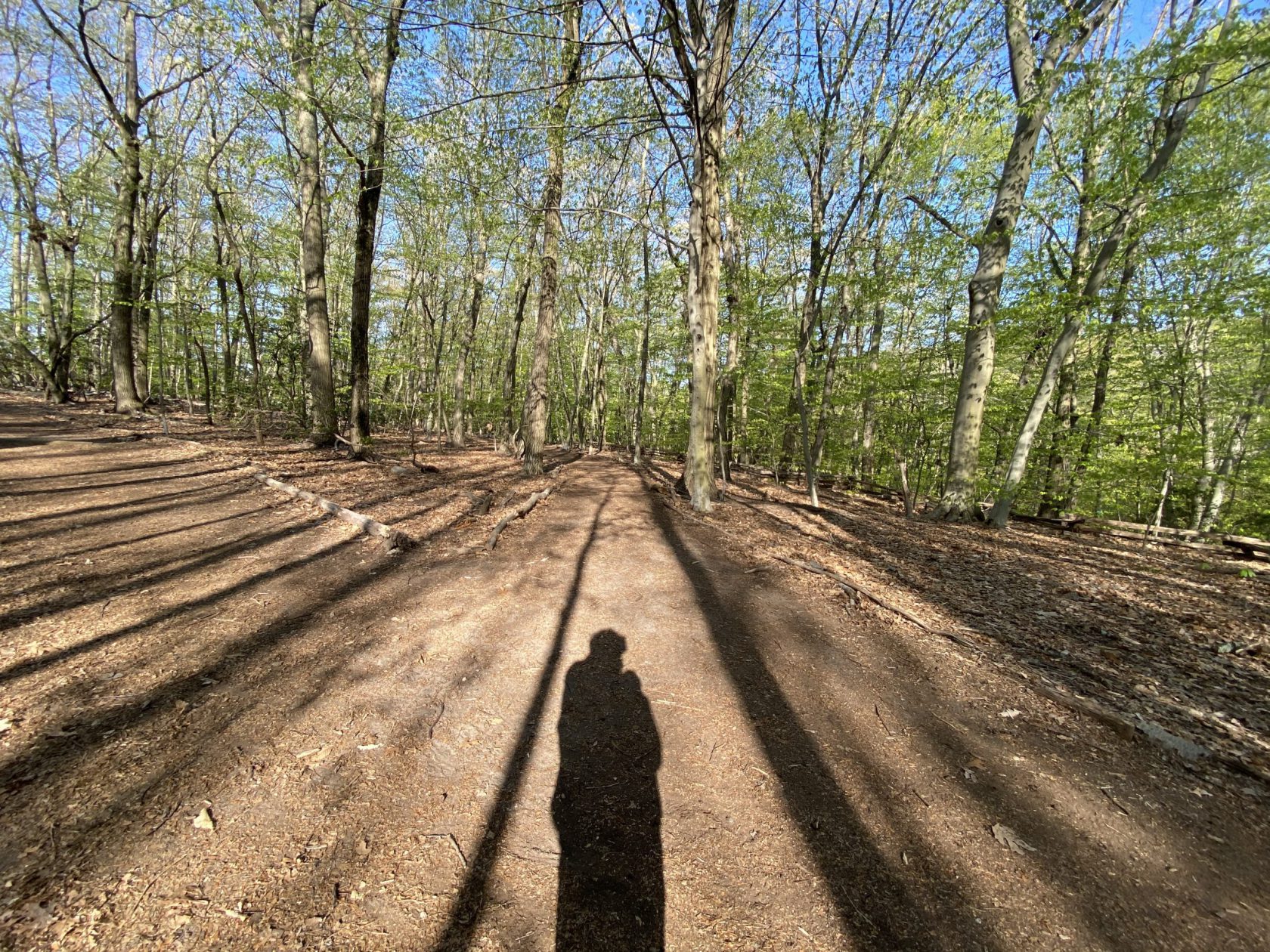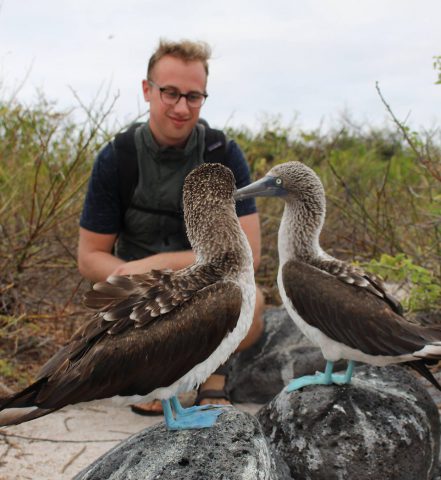
How Nature Can
Heal Burnout
May 2020 | By Greg Nemes
How’s work? If this question makes you want to crawl under the blankets and forget about everything – you might be burnt out. And you wouldn’t be alone. A 2018 Gallup poll on burnout reports 23% of employees report feeling burnout at work very often or always, and an additional 44% reported feeling burnout sometimes.
If youve experienced burnout, you know how awful it can be. The symptoms are similar to depression, both mentally and physically, but more closely connected to your work. So what does this look like on the day to day?
- Feelings of Depletion and Exhaustion
- Difficulty waking and getting out of bed
- Dreading going into work
- Feelings of negativity and cynicism towards work
- Poor performance at work, or self-perception of poor performance
- Difficulty finding joy in your work, even the parts you used to really enjoy
- Negative Sentiment Override – the phenomenon of painting everything in a negative light because of pre-existing negative feelings
- Complaining regularly about work to your friends and family
- Feeling helpless
- Physical symptoms like headaches, muscle pain, digestive issues
- Read the World Health Organization’s official description of burnout here
If you’re experiencing these symptoms, you are probably burnt out, or you will be soon. So now what?
While the root cause of burnout is in the workplace – and the issues there must be resolved – the body and mind are not healed by fixing the workplace issues, this requires it’s own work. Recovery from burnout can include many tactics. Rest, good nutrition, therapy, and exercise are all important.
I’m proposing to build another tactic into the burnout recovery process – nature walks. The benefits of nature walking align perfectly with what our minds and bodies crave when we’re burnt out. In this article we’ll explore the benefits of nature walking, provide a how-to guide, and provide some recommendations on where to walk. Let’s hit the trail.
A disclaimer: I am not a doctor, psychologist, or a health expert of any kind. My qualifications for writing this article are very simple – I’ve experienced burnout and have used nature as one aspect of my recovery process. I’ve also introduced this practice to others who have reported positive results. This article focuses on using nature walks as one part of a recovery process. So we’ll presume that you are taking care of the other typical parts of the recovery process. Do what you can to remedy the root causes of burnout at work. Seek professional mental health help if you can. And practice a healthy lifestyle as best you are able – with proper sleep, nutrition, and exercise. There is plenty of good information on these topics online. While I have researched the information in this article and feel it is sound, I welcome corrections or discussion of any of the content presented here. Shoot me a message greg@tanager.org if you have any questions, thoughts, or concerns.
Benefits of Nature Walking
Nature walking, especially when practiced consistently and intentionally, can have remarkable psychological and physiological benefits. Mental benefits include reduced anxiety and stress, increased sense of well-being, increased cognitive stimulation, and processing of emotional trauma. Physically, nature walkers can expect to breathe easier, lose weight, have more energy, and sleep better. Let’s explore some of the factors that lead to these benefits.
Mindfulness. Nature walking is a kind of active meditation. Focusing on the present moment and your surroundings clears the mind and helps avoid anxious thinking. If negative thoughts arise, focusing on something real in front of you helps – and that’s where the next point comes in handy.
Sensory attention. Your nervous system is attuned to naturally orient itself to new stimuli. So using as many of your senses as possible helps you be fully present and ignore stressful thoughts. This sensory stimulation also helps you enjoy the walk on more and deeper levels.
Bilateral stimulation. Ever notice how we can feel better in times of strain by just walking across a room? Using our body in a rhythmic manner (walking, running, etc) influences the way memories are stored and processed in the two hemispheres of our brain, and can therefore lessen the emotional weight of a memory.
Forest bathing. Plants produce oxygen, so in forests, especially deciduous forests in spring and summer, increased oxygen levels improve your mood and respiration. Another benefit of walking in a forest is the sense of immersion. Feeling engulfed by nature creates a deeper experience and helps us unplug from the connected world.
Aerobic health. Walking at a moderate pace brings your heart rate up to a level (sometimes referred to as Heart Rate Zone 1) that gradually, but powerfully increases your aerobic fitness. This base level aerobic fitness is important for anyone from an office worker to an olympic athlete. A nice side-effect of this heart rate zone is that it’s very effective at burning fat and promoting weight loss.
Resilience. If you recover from burnout, unfortunately, it can return. Having resilience to fight burnout when you start to see the signs is crucial. A consistent practice of nature walking is a great tool to be more resilient.
How to walk the walk
Be intentional. Just walking is fine – but to attain all the benefits outlined above, you do need to bring an intentionality to this process. This underpins all of the points below.
Set aside the time. As much time as possible, really. We suggest a minimum of two hours. The first 30 minutes are about acclimation, unplugging and separating from your typical mindset. In the second 30 minutes, start to focus more on your surroundings with serious attention. After that first hour, you should be able to focus and feel immersed, so this is where the most benefit occurs. All that being said, some time is better than none – so if you only have 20 minutes, you should still get out there!
Choose the road less traveled. Find a place with as few other people as possible. This helps to reduce distraction and keep you focused. A bonus to this is there will likely be more numerous and diverse wildlife in areas that are less busy. You don’t have to be in the middle of nowhere, and you don’t have to avoid people entirely, simply find a place that feels less busy to you.
Activate your senses. Notice each sense and explore it. What do you see? Take in the landscape and also focus in on the tiny details. What do you hear? The more you listen, the more you’ll realize is there. Feel the sensation of your feet touching the ground, how your foot flexes pleasantly on a root or rock. Nature is full of interesting and (usually) pleasant scents – see if you can find where the scents are coming from. If you know your local edible plants, you can even bring taste into the mix (but please, please, be careful). As you walk, continuously activate and re-activate your senses, deepening your physical connection with your environment.
Learn your local flora and fauna. While not required for nature walking, knowing local wildlife, in our opinion, brings such a profound enjoyment and satisfaction to the experience. Finding and identifying plants and animals adds another layer of attention to the walk, and is just plain fun. Start by picking up a few field guides for your region, and see what you can identify. Another great way to learn is to join local nature walks. Look up your local environmental organizations such as land trusts, Audubon chapters, The Nature Conservancy, or birding clubs. Tanager also offers guided nature walks in southern New England, which we’ll talk about at the end of the article.
Leave the phone behind (if possible). Our smartphones hold a universe of information inside them, which distracts from being fully present. Notifications, the ability to pull out your phone and check your email or social media, or even just looking something up online can really move your mind away from the here and now – causing anxiety, stress, and disassociation. Turning your phone off solves part of this problem, but even an inert phone reminds you of the mini universe inside the device. In some cases, you won’t be able to leave your phone behind, especially if you need it for safety reasons. If you do bring it on the walk, turn it off and tuck it away where you can’t see or feel it. We also suggest you not use smartwatches or headphones.
Be safe. In the time of COVID-19, a bit of extra attention is required to safety. First and foremost follow your local laws and guidelines. Practice social distancing, staying a *minimum* of 6ft away from others, and wear a face covering. More generally, use common sense when nature walking. Know your surroundings and get a trail map if possible. Bring water and food. Wear sunblock and sun-protective clothing if necessary. Always stay on the trail – you’ll minimize damage to habitat and wildlife and decrease your chance of encounter with critters and plants that might be harmful. And of course, carry out what you carry in, and leave no trace. Make sure you feel safe in the area (especially if you’re going alone), and have a plan if for some reason you no longer feel safe.

Findings from our nature walks. Clockwise from top left: Baby Painted Turtle, Brown-Lipped Snail, Fogbow at Napatree Point in Watch Hill Rhode Island, Eastern Screech Owl (red phase), Praying Mantis.
Slow Down. Our contemporary lives are often so fast-paced, we overlook the mysteries and beauty all around us. Finding a special moment in nature, like a 1” Long baby turtle on the side of the trail, or a perfectly camouflaged praying mantis on a milkweed plant, can feel like learning a deep secret. We humans love secrets, so these serendipitous moments are so rewarding and memorable.
Where to go
We recommend thinking first about the type of experience you want to have, and then choosing a location that has the attributes for that experience. For example, if you want an immersive, solitary, and somewhat mysterious walk – choose somewhere woodsy and away from human-made noise. If you want the clarity of mind that comes from a feeling of vastness – visit an uncrowded beach or desert. You get the idea. For those of you in Rhode Island or nearby, we’ve compiled a list of our favorite places for nature walking below:
Woodsy, Immersive, and Mysterious
Walking with Tanager

Nature and mindfulness walk for Township Agency, 2019
Tanager offers instructional, guided nature walks and retreats to organizations and businesses that want to provide a healthy and supportive resource for their team. Each walk program is tailored to the group, but generally, the experiences consist of two segments. First, a brief educational session on how to use nature walking as a mindfulness and wellness practice. Next, we guide the group on a nature walk, exploring hidden-gem locations, learning about local wildlife, and putting our mindfulness training to practice. Consider these walks to celebrate your team after accomplishing a milestone, as part of a retreat, or even as a quarterly benefit.
Learn more about our nature walks
We also lead nature walks with the Audubon Society of Rhode Island, other local environmental organizations, and periodically host our own community walks.
To stay up to date on our nature walk services or community nature walks, join our mailing list.
